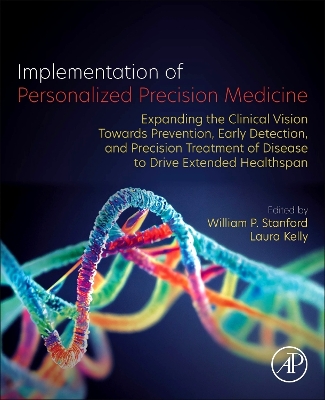Health Information Exchange
 -10%
portes grátis
-10%
portes grátis
Health Information Exchange
Navigating and Managing a Network of Health Information Systems
Dixon, Brian
Elsevier Science & Technology
11/2022
732
Mole
Inglês
9780323908023
15 a 20 dias
Descrição não disponível.
Section 1: Health Information Exchange Fundamentals1. What is Health Information Exchange?2. Health Information Exchange as a Profession3. Policies and Incentives for Adoption: Towards Broader Use
Section 2: Organizational Aspects of Managing Health Information Exchange 4. Engaging and Sustaining Stakeholders: Towards Governance5. Managing the Business of Health Information Exchange: Towards Sustainability6. Managing Privacy, Confidentiality, and Risk: Towards Trust7. Managing Threats to Health Data and Information: Towards Security
Section 3: Technical Architecture and Building Blocks 8. Architectures and Approaches to Manage the Evolving Health Information Infrastructure9. Syntactic Interoperability and the Role of Syntactic Standards in Health Information Exchange10. Standardizing Health Care Data across an Enterprise11. Shared, Longitudinal Health Records for Clinical and Population Health12. Client Registries: Identifying and Linking Patients13. Facility Registries: Metadata for Where Care Is Delivered14. Health Worker Registries: Managing the Health Care Workforce15. Finance and Insurance Services: Supporting Achievement of Universal Healthcare
Section 4: Impacting Health Care Delivery and Outcomes16. The Evidence Base for HIE17. Measuring the Value of HIE18. Leveraging HIE to Facilitate Large Scale Data Analytics19. Incorporating Social, Genomic, and Environmental Determinants into HIE20. Cross-border HIE to Achieve World Health Outcomes21. Future Directions for Health Information Exchange
Section 5: Case Studies in Health Information Exchange22. The Indiana Health Information Exchange23. Using Health Information Exchange to Support Public Health Activities in Western New York: A Case Study24. Creating a 21st Century Health Information Technology Infrastructure: New York's Health Care Efficiency and Affordability Law for New Yorkers Capital Grant Program25. Use of HIEs for Value-Based Care Delivery: A Case Study of Maryland's HIE26. Return on Investment: The Case of the Social Security Administration27. HIE-Enhanced Care Coordination: Implementation and Evaluation of Event Notification Services in the Veterans Health Administration28. A Resilient Infrastructure to Facilitate Digital Health: The Case of HIE in Denmark29. National Health Information Systems: Exchange in Multiple African Nations30. Health Information Exchange in Taiwan: Multiple Layers to Facilitate Broad Access and Use of Data for Clinical and Population Health31. Israel's National HIE Network Ofek: A Robust Infrastructure for Clinical and Population Health32. Bringing HIE to the Middle East and North Africa: The Case of Malaffi in Abu Dhabi
Section 2: Organizational Aspects of Managing Health Information Exchange 4. Engaging and Sustaining Stakeholders: Towards Governance5. Managing the Business of Health Information Exchange: Towards Sustainability6. Managing Privacy, Confidentiality, and Risk: Towards Trust7. Managing Threats to Health Data and Information: Towards Security
Section 3: Technical Architecture and Building Blocks 8. Architectures and Approaches to Manage the Evolving Health Information Infrastructure9. Syntactic Interoperability and the Role of Syntactic Standards in Health Information Exchange10. Standardizing Health Care Data across an Enterprise11. Shared, Longitudinal Health Records for Clinical and Population Health12. Client Registries: Identifying and Linking Patients13. Facility Registries: Metadata for Where Care Is Delivered14. Health Worker Registries: Managing the Health Care Workforce15. Finance and Insurance Services: Supporting Achievement of Universal Healthcare
Section 4: Impacting Health Care Delivery and Outcomes16. The Evidence Base for HIE17. Measuring the Value of HIE18. Leveraging HIE to Facilitate Large Scale Data Analytics19. Incorporating Social, Genomic, and Environmental Determinants into HIE20. Cross-border HIE to Achieve World Health Outcomes21. Future Directions for Health Information Exchange
Section 5: Case Studies in Health Information Exchange22. The Indiana Health Information Exchange23. Using Health Information Exchange to Support Public Health Activities in Western New York: A Case Study24. Creating a 21st Century Health Information Technology Infrastructure: New York's Health Care Efficiency and Affordability Law for New Yorkers Capital Grant Program25. Use of HIEs for Value-Based Care Delivery: A Case Study of Maryland's HIE26. Return on Investment: The Case of the Social Security Administration27. HIE-Enhanced Care Coordination: Implementation and Evaluation of Event Notification Services in the Veterans Health Administration28. A Resilient Infrastructure to Facilitate Digital Health: The Case of HIE in Denmark29. National Health Information Systems: Exchange in Multiple African Nations30. Health Information Exchange in Taiwan: Multiple Layers to Facilitate Broad Access and Use of Data for Clinical and Population Health31. Israel's National HIE Network Ofek: A Robust Infrastructure for Clinical and Population Health32. Bringing HIE to the Middle East and North Africa: The Case of Malaffi in Abu Dhabi
Este título pertence ao(s) assunto(s) indicados(s). Para ver outros títulos clique no assunto desejado.
?21st Century Cures Act; ADT alerts; Abu Dhabi; Accountable care; Accountable care organization; Adoption; Africa; Alerts; Analytic platform; Analytical maturity; Analytics; Analytics-as-a-service (AaaS); Architecture; Artificial intelligence; Bias in record linkage; Blended value proposition; Board of Directors; Business associate; Business associate agreement; Business model; COVID-19; COVID-19 pandemic; Care coordination; Certification; Charter; Claims data; Claims processing; Clearinghouse; Client registry; Clinical care; Clinical document architecture (CDA); Cloud computing; Community networks; Community-based HIE; Community-based organizations; Competencies; Concept; Confidentiality; Conformance testing; Cross-border; Cybersecurity; Dashboard; Data integration; Data normalization; Data quality; Data sharing agreement; Data standardization; Database management system (DBMS); Denmark; Descriptive analytics; Deterministic matching; Digital health; Digital health infrastructure; DirectTrust; Disability determination; Dissemination; EDispensing; EHealth; EHealth Exchange; EPrescriptions; Education; Effectiveness; Electronic health information (EHI); Electronic health record; Electronic health record (EHR); Electronic medical record (EMR); Enterprise HIE; Enterprise Service Bus; Enterprise master patient index; Environmental health; Equivalence; Ethiopia; Europe; Evaluation; Evaluation report; Event notifications; Evidence; Evidence-based medicine; Expense; Facility data; Facility identification; Facility list; Facility metadata; Facility registry; Fast Healthcare Interoperability Resources (FHIR); Field comparators; Financing; Funding; GDPR; Governance; Governing body; Government; Government-facilitated HIE; HIE; HIE professional; HIPAA; HIPAA Security Rule; HITECH; HIV; Health Information Organization
Section 1: Health Information Exchange Fundamentals1. What is Health Information Exchange?2. Health Information Exchange as a Profession3. Policies and Incentives for Adoption: Towards Broader Use
Section 2: Organizational Aspects of Managing Health Information Exchange 4. Engaging and Sustaining Stakeholders: Towards Governance5. Managing the Business of Health Information Exchange: Towards Sustainability6. Managing Privacy, Confidentiality, and Risk: Towards Trust7. Managing Threats to Health Data and Information: Towards Security
Section 3: Technical Architecture and Building Blocks 8. Architectures and Approaches to Manage the Evolving Health Information Infrastructure9. Syntactic Interoperability and the Role of Syntactic Standards in Health Information Exchange10. Standardizing Health Care Data across an Enterprise11. Shared, Longitudinal Health Records for Clinical and Population Health12. Client Registries: Identifying and Linking Patients13. Facility Registries: Metadata for Where Care Is Delivered14. Health Worker Registries: Managing the Health Care Workforce15. Finance and Insurance Services: Supporting Achievement of Universal Healthcare
Section 4: Impacting Health Care Delivery and Outcomes16. The Evidence Base for HIE17. Measuring the Value of HIE18. Leveraging HIE to Facilitate Large Scale Data Analytics19. Incorporating Social, Genomic, and Environmental Determinants into HIE20. Cross-border HIE to Achieve World Health Outcomes21. Future Directions for Health Information Exchange
Section 5: Case Studies in Health Information Exchange22. The Indiana Health Information Exchange23. Using Health Information Exchange to Support Public Health Activities in Western New York: A Case Study24. Creating a 21st Century Health Information Technology Infrastructure: New York's Health Care Efficiency and Affordability Law for New Yorkers Capital Grant Program25. Use of HIEs for Value-Based Care Delivery: A Case Study of Maryland's HIE26. Return on Investment: The Case of the Social Security Administration27. HIE-Enhanced Care Coordination: Implementation and Evaluation of Event Notification Services in the Veterans Health Administration28. A Resilient Infrastructure to Facilitate Digital Health: The Case of HIE in Denmark29. National Health Information Systems: Exchange in Multiple African Nations30. Health Information Exchange in Taiwan: Multiple Layers to Facilitate Broad Access and Use of Data for Clinical and Population Health31. Israel's National HIE Network Ofek: A Robust Infrastructure for Clinical and Population Health32. Bringing HIE to the Middle East and North Africa: The Case of Malaffi in Abu Dhabi
Section 2: Organizational Aspects of Managing Health Information Exchange 4. Engaging and Sustaining Stakeholders: Towards Governance5. Managing the Business of Health Information Exchange: Towards Sustainability6. Managing Privacy, Confidentiality, and Risk: Towards Trust7. Managing Threats to Health Data and Information: Towards Security
Section 3: Technical Architecture and Building Blocks 8. Architectures and Approaches to Manage the Evolving Health Information Infrastructure9. Syntactic Interoperability and the Role of Syntactic Standards in Health Information Exchange10. Standardizing Health Care Data across an Enterprise11. Shared, Longitudinal Health Records for Clinical and Population Health12. Client Registries: Identifying and Linking Patients13. Facility Registries: Metadata for Where Care Is Delivered14. Health Worker Registries: Managing the Health Care Workforce15. Finance and Insurance Services: Supporting Achievement of Universal Healthcare
Section 4: Impacting Health Care Delivery and Outcomes16. The Evidence Base for HIE17. Measuring the Value of HIE18. Leveraging HIE to Facilitate Large Scale Data Analytics19. Incorporating Social, Genomic, and Environmental Determinants into HIE20. Cross-border HIE to Achieve World Health Outcomes21. Future Directions for Health Information Exchange
Section 5: Case Studies in Health Information Exchange22. The Indiana Health Information Exchange23. Using Health Information Exchange to Support Public Health Activities in Western New York: A Case Study24. Creating a 21st Century Health Information Technology Infrastructure: New York's Health Care Efficiency and Affordability Law for New Yorkers Capital Grant Program25. Use of HIEs for Value-Based Care Delivery: A Case Study of Maryland's HIE26. Return on Investment: The Case of the Social Security Administration27. HIE-Enhanced Care Coordination: Implementation and Evaluation of Event Notification Services in the Veterans Health Administration28. A Resilient Infrastructure to Facilitate Digital Health: The Case of HIE in Denmark29. National Health Information Systems: Exchange in Multiple African Nations30. Health Information Exchange in Taiwan: Multiple Layers to Facilitate Broad Access and Use of Data for Clinical and Population Health31. Israel's National HIE Network Ofek: A Robust Infrastructure for Clinical and Population Health32. Bringing HIE to the Middle East and North Africa: The Case of Malaffi in Abu Dhabi
Este título pertence ao(s) assunto(s) indicados(s). Para ver outros títulos clique no assunto desejado.
?21st Century Cures Act; ADT alerts; Abu Dhabi; Accountable care; Accountable care organization; Adoption; Africa; Alerts; Analytic platform; Analytical maturity; Analytics; Analytics-as-a-service (AaaS); Architecture; Artificial intelligence; Bias in record linkage; Blended value proposition; Board of Directors; Business associate; Business associate agreement; Business model; COVID-19; COVID-19 pandemic; Care coordination; Certification; Charter; Claims data; Claims processing; Clearinghouse; Client registry; Clinical care; Clinical document architecture (CDA); Cloud computing; Community networks; Community-based HIE; Community-based organizations; Competencies; Concept; Confidentiality; Conformance testing; Cross-border; Cybersecurity; Dashboard; Data integration; Data normalization; Data quality; Data sharing agreement; Data standardization; Database management system (DBMS); Denmark; Descriptive analytics; Deterministic matching; Digital health; Digital health infrastructure; DirectTrust; Disability determination; Dissemination; EDispensing; EHealth; EHealth Exchange; EPrescriptions; Education; Effectiveness; Electronic health information (EHI); Electronic health record; Electronic health record (EHR); Electronic medical record (EMR); Enterprise HIE; Enterprise Service Bus; Enterprise master patient index; Environmental health; Equivalence; Ethiopia; Europe; Evaluation; Evaluation report; Event notifications; Evidence; Evidence-based medicine; Expense; Facility data; Facility identification; Facility list; Facility metadata; Facility registry; Fast Healthcare Interoperability Resources (FHIR); Field comparators; Financing; Funding; GDPR; Governance; Governing body; Government; Government-facilitated HIE; HIE; HIE professional; HIPAA; HIPAA Security Rule; HITECH; HIV; Health Information Organization







